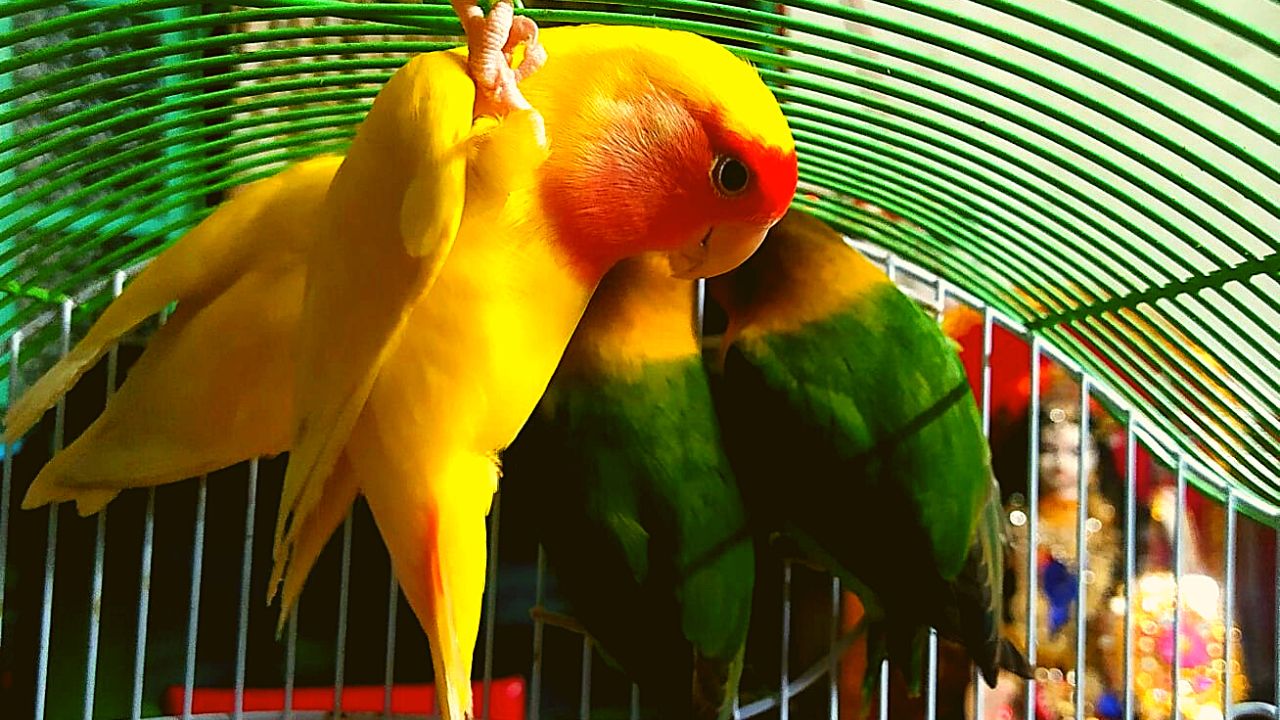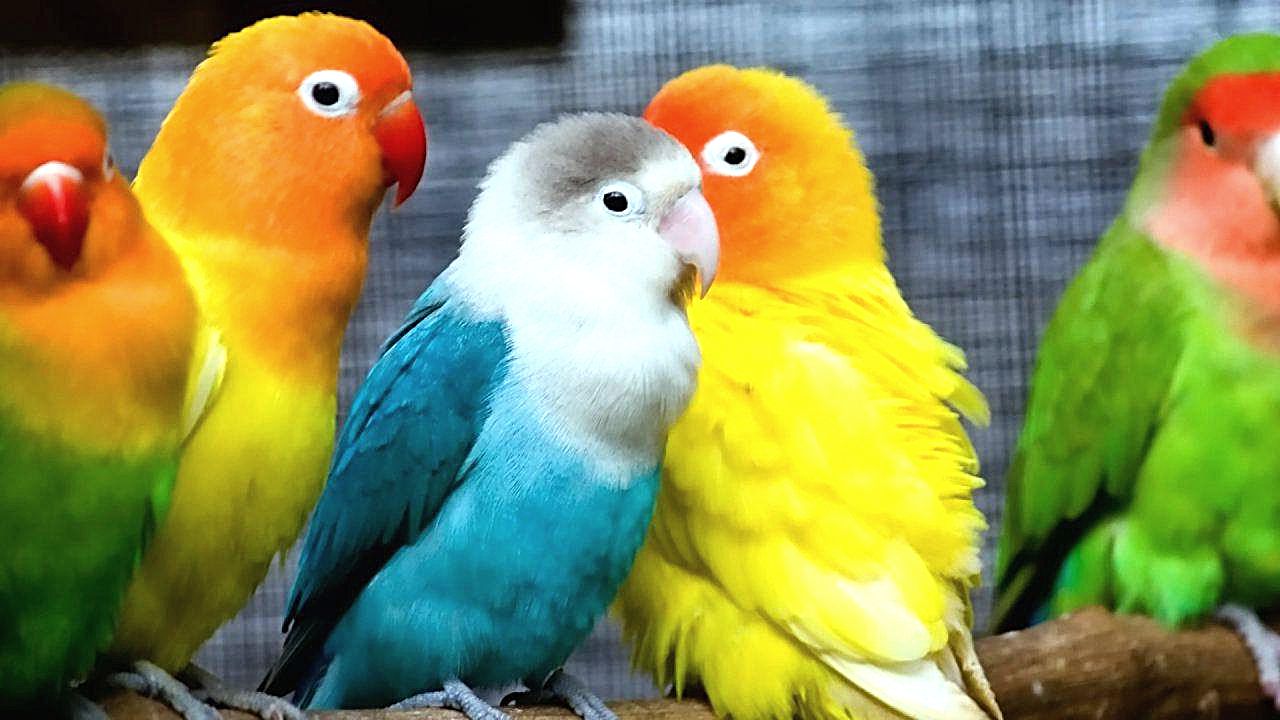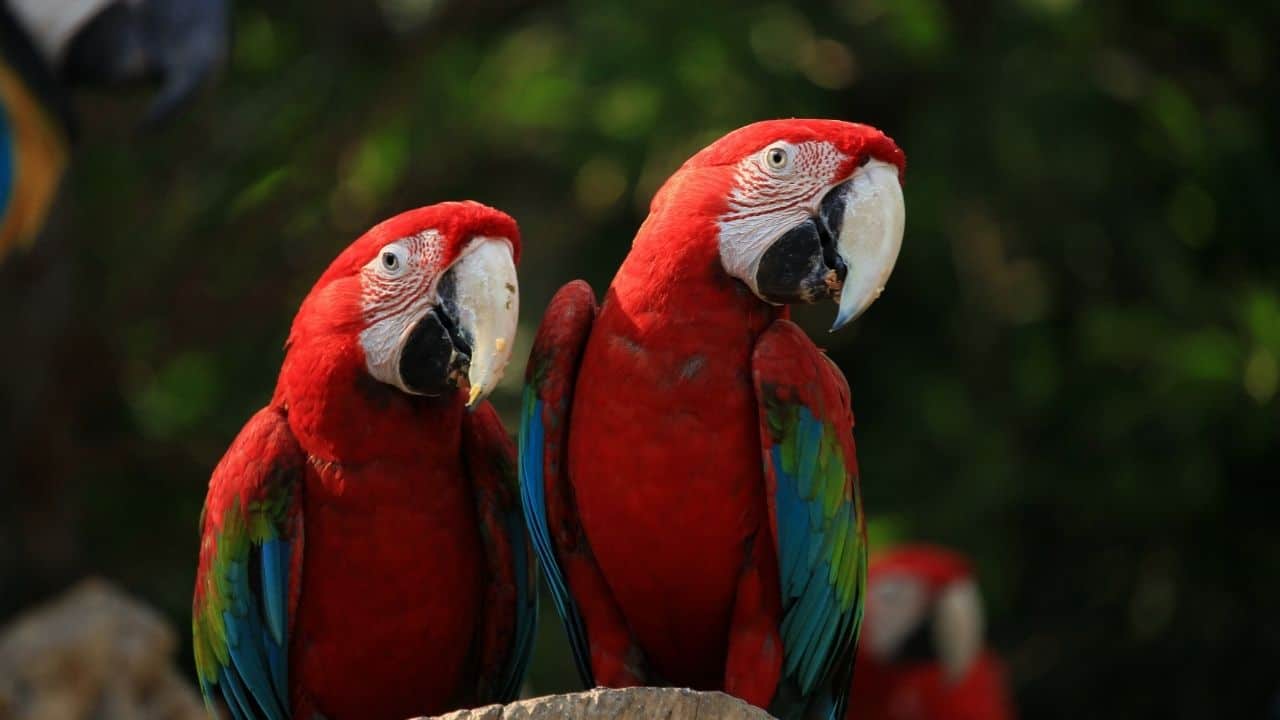
Table of Contents
Lovebirds, an exotic bird species, are highly sought after as pets due to their popularity and unique characteristics. These small and inexpensive breeds of birds are an excellent choice for those who desire an exotic pet without the hassle and expense associated with caring for more challenging birds like macaws. Also, love birds are types of parrots that are legal in India.
Lovebirds are known for their vibrant colours, adding to their appeal as pets and breeders. Breeders constantly strive to develop new breeds and create captivating colour combinations that are not yet commercially available. If you’re interested in lovebirds, it’s essential to be aware of the lovebird’s price in India and the various colour options they offer.
Lovebirds Price in India
I bought my first pair of green lovebirds at Galiff Street, Kolkata, for ₹1200.
Prices for common lovebirds typically range from ₹800 to ₹2,000 per bird.
For the true connoisseur of avian companions, rare mutations and hand-tamed lovebirds offer a special allure. These unique specimens can be a bit more elusive and pricier. Expect to find their price tags ranging from ₹2,000 to ₹20,000 or even higher, depending on their rarity and level of tameness.
| City | Love bird Price (INR) |
|---|---|
| Lovebirds Price in Delhi | ₹1,500 to ₹3,500 |
| Lovebirds Price in Mumbai | ₹1,800 to ₹4,000 |
| Lovebirds Price in Kolkata | ₹1,200 to ₹2,500 |
| Lovebirds Price in Chennai | ₹1,500 to ₹3,000 |
| Lovebirds Price in Bangalore | ₹1,800 to ₹4,000 |
| Lovebirds Price in Hyderabad | ₹1,500 to ₹3,500 |
| Lovebirds Price in Ahmedabad | ₹1,500 to ₹3,000 |
| Lovebirds Price in Pune | ₹1,500 to ₹3,500 |
| Lovebirds Price in Jaipur | ₹1,200 to ₹2,500 |
| Lovebirds Price in Lucknow | ₹1,500 to ₹3,000 |
Love birds lifespan
The average lifespan of lovebirds can vary depending on the specific species and the care provided. Generally, lovebirds have an average lifespan of 10 to 15 years. However, with proper nutrition, regular veterinary care, and a suitable environment, some lovebirds have been known to live up to 20 years or more.
Different types of Love birds
There are several different types, or species, of lovebirds. Here are some of the most common species of lovebirds:
| Lovebird Variety | Scientific Name | Average Lifespan | Size | Coloration | Personality and Traits |
|---|---|---|---|---|---|
| Peach-Faced Lovebird | Agapornis roseicollis | 10-15 years | 5-7 inches | Peach, Green, Yellow | Playful, Affectionate |
| Fischer’s Lovebird | Agapornis fischeri | 10-20 years | 6-7 inches | Green, Orange, Yellow | Energetic, Social |
| Masked Lovebird | Agapornis personatus | 10-15 years | 5-6 inches | Green, Blue, Yellow | Intelligent, Curious |
| Lilian’s Lovebird | Agapornis lilianae | 10-15 years | 5-6 inches | Green, Orange | Sweet-Natured, Shy |
| Black-Cheeked Lovebird | Agapornis nigrigenis | 10-15 years | 5-6 inches | Green, Black, Red | Vocal, Social |
| Nyasa Lovebird | Agapornis lilianae | 10-15 years | 5-6 inches | Green, Blue, Yellow | Calm, Bonding |
Peach-faced Lovebird (Agapornis roseicollis)
This is the most popular and widely kept species of lovebird. They are known for their vibrant colours, with the males having bright red or orange faces.

Fischer’s Lovebird (Agapornis fischeri)
Fischer’s lovebirds are known for their striking green plumage and orange faces. They are smaller in size compared to other lovebird species.

Masked Lovebird (Agapornis personatus)
Masked lovebirds are named for the mask-like markings on their faces. They have predominantly green plumage and a yellowish or orange face.

Nyasa Lovebird (Agapornis lilianae)
Also known as Lilian’s lovebird, this species has a mostly green body, a blue rump, and a reddish-orange face.

Black-cheeked Lovebird (Agapornis nigrigenis)
As the name suggests, these lovebirds have black cheeks, contrasting with their green body. They also have a red forehead and a blue rump.

Abyssinian Lovebird (Agapornis taranta)
Abyssinian lovebirds have a unique pattern on their feathers, combining dark and light green colours. They also have a bright red face.

Lovebirds breed profile
| Characteristic | Description |
|---|---|
| Common Name | Lovebirds |
| Scientific Name | Agapornis (genus) |
| Size | Small, typically 5 to 7 inches (13 to 17 cm) |
| Lifespan | 10 to 15 years (varies by species and care) |
| Native Habitat | Sub-Saharan Africa, Madagascar, and nearby islands |
| Species | Several species, including Peach-faced, Fischer’s, Masked, and more |
| Color Variations | Various colors and mutations in captivity |
| Personality | Social, affectionate, and often monogamous |
| Diet | Seeds, fruits, vegetables, and occasional protein sources |
| Housing | Roomy cage with toys and perches |
| Social Behavior | Prefer to live in pairs or small groups |
| Vocalization | Chirping, chattering, and occasional squawking |
| Lifespan in Captivity | Proper care can extend their lifespan |
| Breeding | Monogamous; lay 4-6 eggs in a clutch |
| Notable Features | Moderate, requires attention and interaction |
| Common Health Issues | Obesity, respiratory infections, and feather disorders |
| Maintenance Level | Moderate, require attention and interaction |
| Legal Restrictions | Some species may have trade restrictions |
| Conservation Status | Varies by species; some are endangered |
Love Birds Care Tips from experts
Although we have separate ‘lovebird care tips‘, some crucial points are mentioned here.
Cage and Environment
- Provide a spacious cage allowing your lovebirds to move around freely and stretch their wings.
- Place the cage in a quiet area away from drafts, direct sunlight, and household hazards.
- Line the cage with suitable bedding or paper towels, and clean it regularly.
- Place perches at different heights to encourage exercise and prevent foot problems.
Diet
- Feed your lovebirds a balanced diet of high-quality birdseed or pellets supplemented with fresh fruits, vegetables, and sprouted seeds.
- Offer a variety of foods to provide essential nutrients. Examples include apples, carrots, spinach, and millet sprays.
- Avoid feeding them toxic foods like avocado, chocolate, caffeine, or alcohol.
- Provide fresh water daily and clean the water container regularly.
Socialization and Bonding
- Lovebirds are social birds and thrive on companionship. Consider getting at least a pair to keep each other company.
- Spend time with your lovebirds daily, talking to them, offering treats, and playing with them outside of their cage.
- Handle your birds gently and allow them to become comfortable with your presence.
- Gradually introduce them to new experiences, sounds, and environments to prevent fear and stress.
Mental Stimulation and Toys
- Provide a variety of bird-safe toys, such as bells, ropes, swings, and puzzles, to keep your lovebirds mentally stimulated and entertained.
- Rotate the toys regularly to prevent boredom.
- Lovebirds enjoy shredding and chewing, so they offer appropriate materials like untreated wood toys or palm fronds.
Exercise and Flight
- Allow your lovebirds to exercise by providing ample out-of-cage time in a secure, bird-proofed area.
- Ensure the area is free from hazards like toxic plants, open windows, or other pets.
- Trim their flight feathers or provide a flight harness for their safety if necessary.
Veterinary Care
- Schedule regular check-ups with an avian veterinarian to ensure your lovebirds’ health.
- Watch for signs of illness, such as changes in appetite, behaviour, or appearance, and seek veterinary care if needed.
- Keep the cage and surrounding area clean to prevent the spread of bacteria or parasites.
Common health issues faced by Lovebirds
Like any other pet bird, lovebirds can be susceptible to specific health issues. Here are some common health problems that lovebirds may encounter:
Respiratory Infections
Lovebirds can be prone to respiratory infections caused by bacteria, viruses, or fungi. Symptoms may include sneezing, nasal discharge, difficulty breathing, coughing, or wheezing.
Feather Plucking
Feather plucking is a behavioural issue where lovebirds excessively preen or chew on their feathers, leading to bald patches or damaged plumage. Stress, boredom, nutritional deficiencies, or underlying health problems can cause this behaviour.
Psittacine Beak and Feather Disease (PBFD)
PBFD is a viral disease affecting lovebirds’ feathers, beaks, and immune systems. Infected birds may experience feather loss, beak abnormalities, immune suppression, weight loss, and general weakness.
Egg Binding
Female lovebirds can sometimes experience difficulties laying eggs, resulting in egg binding. This condition occurs when an egg gets stuck in the reproductive tract, leading to discomfort, lethargy, and potentially life-threatening complications.
Malnutrition
Improper diet can lead to malnutrition in lovebirds. A lack of essential nutrients can weaken their immune system, affect feather quality, and result in various health issues. Providing a balanced diet of pellets, fresh fruits, vegetables, and occasional treats is crucial.
Gastrointestinal Problems
Lovebirds can suffer from digestive issues like diarrhea, crop impaction, or bacterial infections. Poor diet, stress, or bacterial overgrowth can contribute to these problems.
Parasites
Lovebirds can be infested with external parasites like mites or lice, which can cause itching, feather damage, and discomfort. If left untreated, internal parasites, such as worms can also affect their health.
FAQS
Are lovebirds parrots?
Yes, lovebirds are indeed parrots. They belong to the parrot family (Psittacidae) and are classified as small parrots.
How big do lovebirds typically grow?
Lovebirds are relatively small birds, measuring around 5 to 7 inches (13 to 18 cm) in length.
Can lovebirds be kept alone?
Lovebirds are highly social birds and thrive when they have a companion. It is generally recommended to keep them in pairs or small groups to ensure their emotional well-being.
What do lovebirds eat?
Lovebirds primarily eat a diet consisting of seeds, pellets, fruits, vegetables, and occasional treats. My lovebirds love to eat Muri (puffed rice) lol.
Do lovebirds require special care?
Lovebirds require proper care to thrive. This includes providing a spacious cage, a balanced diet, regular social interaction, mental stimulation through toys and activities, and routine veterinary check-ups.
Can lovebirds be trained?
Yes, lovebirds are intelligent birds and can be trained with patience and positive reinforcement. They can learn tricks, commands, and even some basic words.








